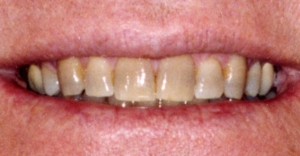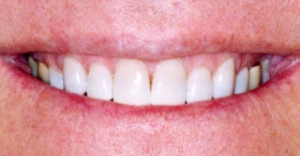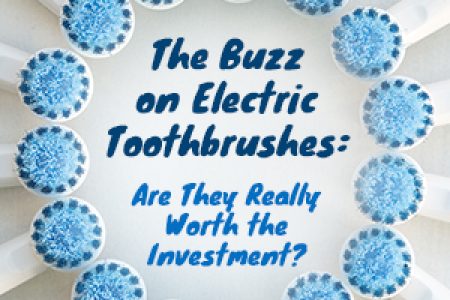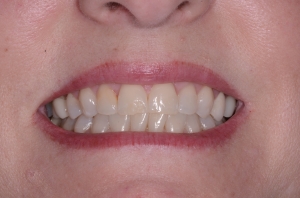White teeth. There are ads everywhere for all kinds of whitening products, from mouthwash to toothpaste to the whitening that only a dentist can do. What really works and what is just snake oil? Sometimes it is hard to tell.
Let’s talk about what whitening is and how it works, then I will go through the different products that you will see and rate them. We will highlight KOR Whitening and its ability to get the best result for your teeth.

Not everyone whitens the same. When we say that we are whitening your teeth we are actually just removing stain from your enamel and leaving your teeth at their natural color. For most people this is a white color, however, HOW white is based on your genetics and tooth condition.
If you have thin enamel from lemon sucking or if you have worn your teeth thin, then your teeth may turn more yellow or grey when you attempt to whiten your teeth. It is best to know this up front rather than after you spend the money on whitening. In these cases, veneers may be needed to change the color of your teeth.
Another factor is where the stain came from. If the stain is from your normal day to day activity, coffee, wine, ketchup and soy sauce, then those organic molecules are easily removed with the bleaching agent. Stain that happened when you were growing from antibiotics or illness, this is much harder to remove and require a stronger bleach and more detailed approach to remove.
Sometimes people have white or brown spots on their teeth, there are two ways to approach these. If they are small, then micorabrasion can remove some of the spots prior to bleaching. If they are larger than they can be removed and replaced with white colored filling material after bleaching. Many times the larger spots will whiten with your tooth and be less noticeable and not require any treatment.
Now that we know the types of stain, how does whitening work?
All whitening products are a type of hydrogen peroxide. Not the type you find in the store, but a special type that is suspended in a gel. The concentrations vary and sometimes they have other ingredients to help reduce sensitivity or to help activate the hydrogen peroxide. Hydrogen peroxide breaks down into water and a free radical oxygen molecule. This reactive molecule penetrates into the tooth and breaks up the stain molecules into smaller pieces so that they wash out of the enamel, leaving behind stain free teeth.
Whew…lots of chemistry…
The higher the concentration of the peroxide and the longer it is on the teeth; the better results you will see with the whitening. However, as you increase the concentration and time the chance of sensitivity and damage to the gum tissue also increases. It is a push-pull relationship with whitening and sensitivity. Additionally, saliva has special enzymes that neutralize free radicals, so if saliva touches the whitening product, it will be rendered useless.
You can see how toothpastes, mouthwashes and other products that claim “whitening” would just be neutralized by your saliva. Toothpaste specifically can work by having heaver grit abrasive materials that polish off surface stain, however they also remove enamel and can cause sensitivity. I recommend using them only occasionally if needed and not at every brushing.
In-office whitening will get you the best results due to the fact that much higher concentration of bleaching product is used. This will result in more stain being removed and whiter teeth, however, it will also mean more of a chance for sensitivity. In-office bleaching agents have additives to reduce sensitivity and protocols to protect your gums and lips, many times there is no sensitivity at all.
Many people ask about the light that is used in some whitening systems. With only one exception, there is not one shred of scientific proof that the light does anything to improve results. The light is a marketing gimmick. The exception is the newer bleaching agents that have a special molecule that splits the hydrogen peroxide when a curing light is used (the same light we use for white fillings) for a few seconds.
The best whitening system on the market today is KOR Whitening. This has a very specific formulation with desensitizers and uses both at home trays and in-office whitening to get the BEST result possible for your teeth. It even bleaches out antibiotic staining that was previously thought to be “unbleachable”. At Stoneridge Dental Dr. Saydyk has seen the results of KOR Whitening and recommends it to all his patients that desire the best.
If you have any questions about bleaching or about dentistry in general call or click to set up an appointment with Dr. Saydyk today!





